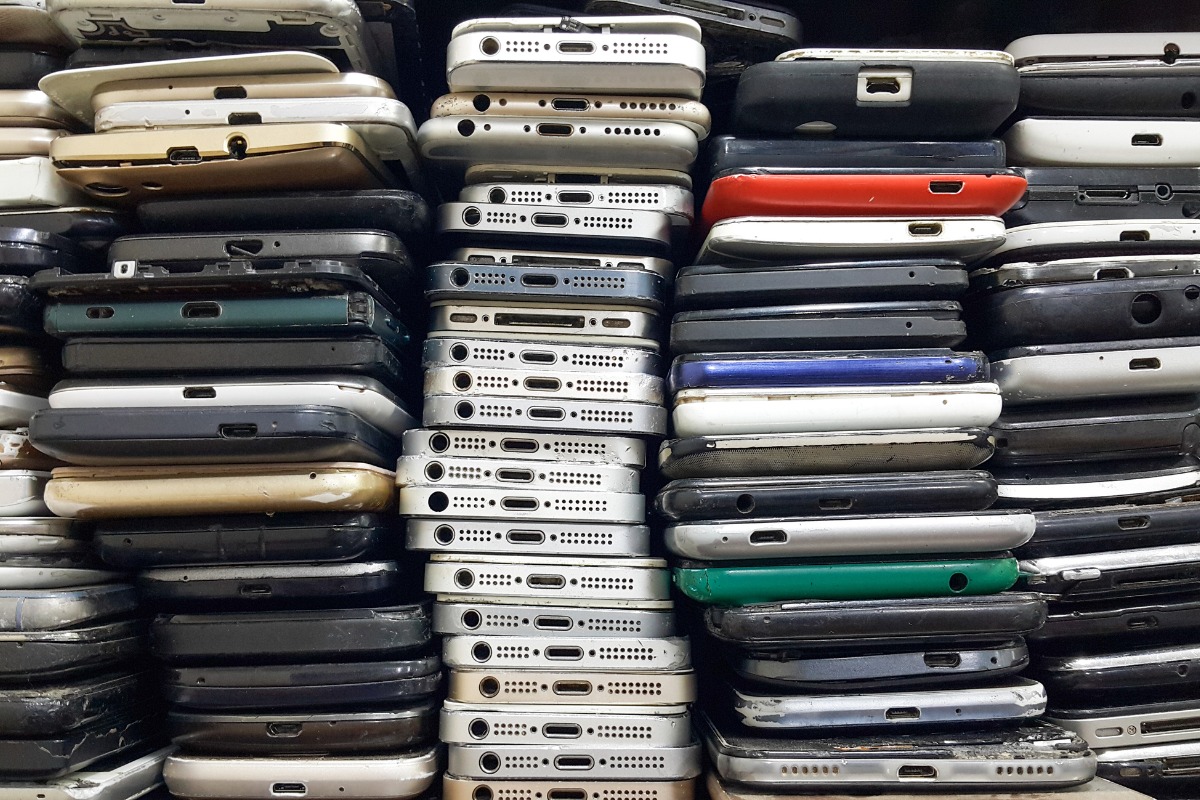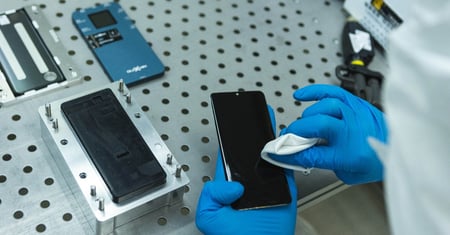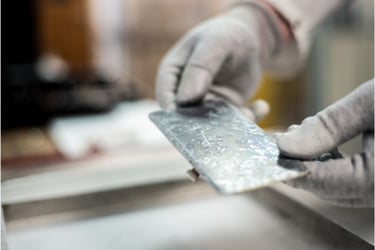Are you finding your business struggling with the number of technology returns? Are you looking to maximize value recovery on these?
If you fail to move quickly, you face losing money on returns, hitting your profits, and will be unable to shift this stock.
Ingram Micro Lifecycle is accredited by major Original Equipment Manufacturers (OEMs), manufacturers, and networks.
We operate the majority of the UK’s biggest consumer smartphone trade-in platforms. High-volume inflows of devices are sourced not only from trade-ins but also from:
- Businesses
- Operators
- OEMs
- Insurers
- Leasing companies
Daily, we rapidly and efficiently prepare returns ahead of sale directly from our dealer portal to business customers.
In this article, we explain whether it’s possible to calculate how quickly your returned smartphones depreciate and the steps you can take to limit depreciation.
Can I work out the depreciation of returned smartphones?
Simply put, there is no single calculation to accurately measure or predict the depreciation rate on these devices.
Several interchangeable external factors impact the speed at which devices lose value.
What impacts the depreciation of smartphone returns?
Multiple factors determine how quickly the value of a returned smartphone can depreciate.
Ultimately, speed is of the essence when looking to recover value. Typically, we see a depreciation of up to 2-4% every two weeks.
The following factors speed up or slow down the depreciation of a smartphone:
1. OEM release schedule
When an OEM releases a new model, the value of the last model will start to drop.
The announcement of a new model release triggers a surge of older devices becoming available on the market.
As consumers look to trade in their older devices for the new ones upon release, the availability of the older device will peak.
This saturation will cause the device value to drop.
2. Age of the model
The amount of time passed since the model was released will impact the rate of depreciation. The older the model, the more it will have dropped in value.
The age of the model also affects supply and demand. Often, the older the model, the less in demand they are and the higher supply available.
Conversely, because older devices are cheaper, these retain a degree of desirability as a cost-effective option compared to newer models.
If you want to recover maximum value quickly, you won’t want to wait for your returns to be considered ‘retro’!
3. Original cost of the device
Devices priced higher on release will be worth more than those priced lower on release as the value has further to drop.
These higher-priced devices will typically show a faster reduction as the units begin to age much like a brand-new car driving off the forecourt losing some of its value.
However, the availability of supply can hold up prices of newer grade A models when there is a shortage of brand-new devices in the open market.
4. Supply of smartphones
The supply of smartphones affects the potential value recovery of returns. An influx of new devices being supplied will drop the value of returned devices.
Supply can ebb and flow based on:
- Global socioeconomic and political factors – These can be unpredictable and difficult to mitigate. For example, wars, COVID-19, and Brexit. Currency exchange rates also impact supply. These factors reduce new goods being shipped and increase demand for re-kitted returns.
- Supplier disposal – Newer models eventually face disposal by a supplier due to obsolescence, overstocks, or faults. This disposal drives models onto the recommerce market. A model that is not available from distributors can continue being sourced via these channels.
Buying teams of new goods will face longer wait times for receipt of goods as opposed to those buying returns which are readily available.
5. Demand
This doesn’t run in a straight line throughout the year, or even year to year, particularly because of release schedules.
Higher demand reduces depreciation, so devices retain value.
Demand is affected by:
- Seasonality, including periods such as Black Friday and Christmas, when consumer shopping increases.
- The end of the month; payday!
- The cost-of-living crisis – more consumers and businesses are turning to more affordable options rather than brand-new devices, and they can still benefit from payment plans.
Several factors are shifting public opinion toward buying refurbished devices.
How can I minimize the depreciation of my returned smartphone stock?
The bottom line in minimizing stock depreciation is getting the value recovered as quickly as possible. This means preparing it ready for resale efficiently.
All the below factors will increase trust in your business as a reseller, reduce the returns from these channels, and ultimately increase sales.
To guarantee a quick sale for the highest price, you need:
1. Rigorous processes to ensure quality
Returned smartphones need to be assessed ahead of repair and refurbishment to get them in peak condition. This helps achieve the highest possible prices when reselling.
Device screening will determine what repairs are needed. This should involve rigorous checks on cosmetics and damages.
The right returns management partner will have OEM accreditations to supply genuine parts where necessary for in-warranty devices. They’ll also be able to detect any fake already present in the device.
Staying compliant with data wiping is also necessary. There is different specialist software available that ensures data-bearing devices are securely wiped.
Having tried and tested processes in place expedites getting products out for sale.
2. Strong relationships and logistics
To conduct high-quality repairs and refurbishment, you’ll need to be able to source the components at the right price. A repair and refurbishment provider will have contracts with suppliers for device parts.
You’ll also need access to sales channels, such as B2B dealer portals, to sell your returned stock through.
3. Ability to scale
Depending on the volume of smartphone returns that your business sees, or may see in the future, you need to ensure your procedures can withstand scaling up.
This means not only processing the returns but also managing the outgoing sales. Any partners you use must be able to scale as well to meet demand.
4. Reliability
Any external partners you use should have the experience and resources to provide a high-quality service. Anything else risks impacting your reputation.
The stock you sell should be repaired and re-kitted to a high standard to ensure high prices, low returns, and repeated custom.
Can Ingram Micro Lifecycle provide a returns management program?
Yes! We have an extensive database of trading partners and suppliers who we sell to and buy from. We are accredited by all the major OEMs, so we’re experts when it comes to their repair processes. This also enables access to genuine parts and ensures we use these parts only.
Working with the largest trade-in platforms in the UK and receiving high inflows of returns from other sources, we typically manage up to 3000 devices of new stock per day.
Our global footprint supports upscaling opportunities and as part of Ingram Micro, we offer true financial stability.













.jpg?width=450&height=250&name=smarthphone%20repair%20using%20freezing%20method%20(2).jpg)
